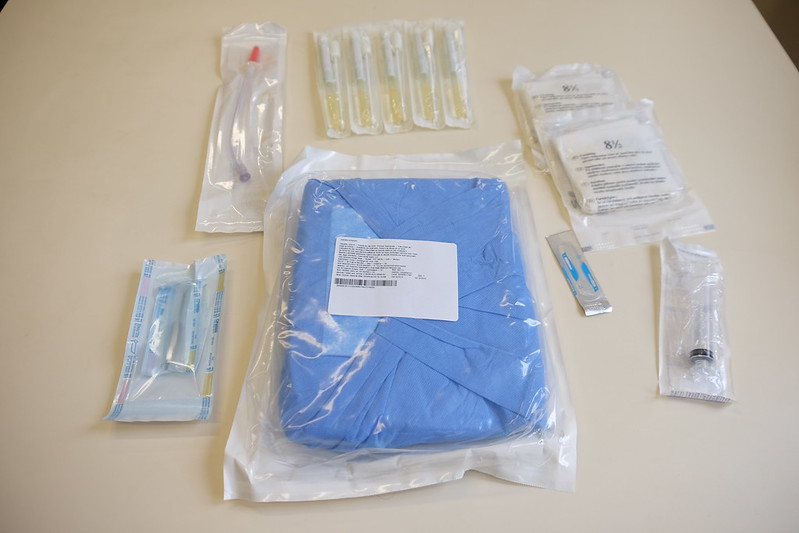1.3.7 The Decontamination Process
According to the online Medical Dictionary, Decontamination refers to “the use of physical or chemical means to remove, inactivate, or destroy bloodborne or other pathogens on a surface or item, to the point where they are no longer capable of transmitting infectious particles, and the surface or item is rendered safe for handling, use, or disposal.” There are three steps to the decontamination process, which must be completed in order:
1. Cleaning
As you may recall, cleaning refers to “the physical removal of foreign material (e.g., dust, soil) and organic material (e.g., blood, secretions, excretions, microorganisms). Cleaning physically removes rather than kills microorganisms. It is accomplished with water, detergents and mechanical action” (CDC, 2020a).
After cleaning an item, it will need to be disinfected. However, there are commercial cleansing solutions that do both cleaning and disinfection at the same time.
2. Disinfection
Disinfection refers to “the inactivation of disease-producing microorganisms. Disinfection does not destroy bacterial spores. Medical equipment/devices must be cleaned thoroughly before effective disinfection can take place” (CDC, 2020a).
An item must be cleaned and disinfected prior to sterilization.
3. Sterilization
Sterilization refers to the level of re-cleaning required when processing critical medical equipment/devices. Sterilization results in the destruction of all forms of microbial life, including bacteria, viruses, spores and fungi. Equipment/devices must be cleaned thoroughly before effective sterilization can take place.

Media Attributions
- “Sterile Objects (05010131)” by IAEA Imagebank is licensed under CC BY-NC-ND 2.0

